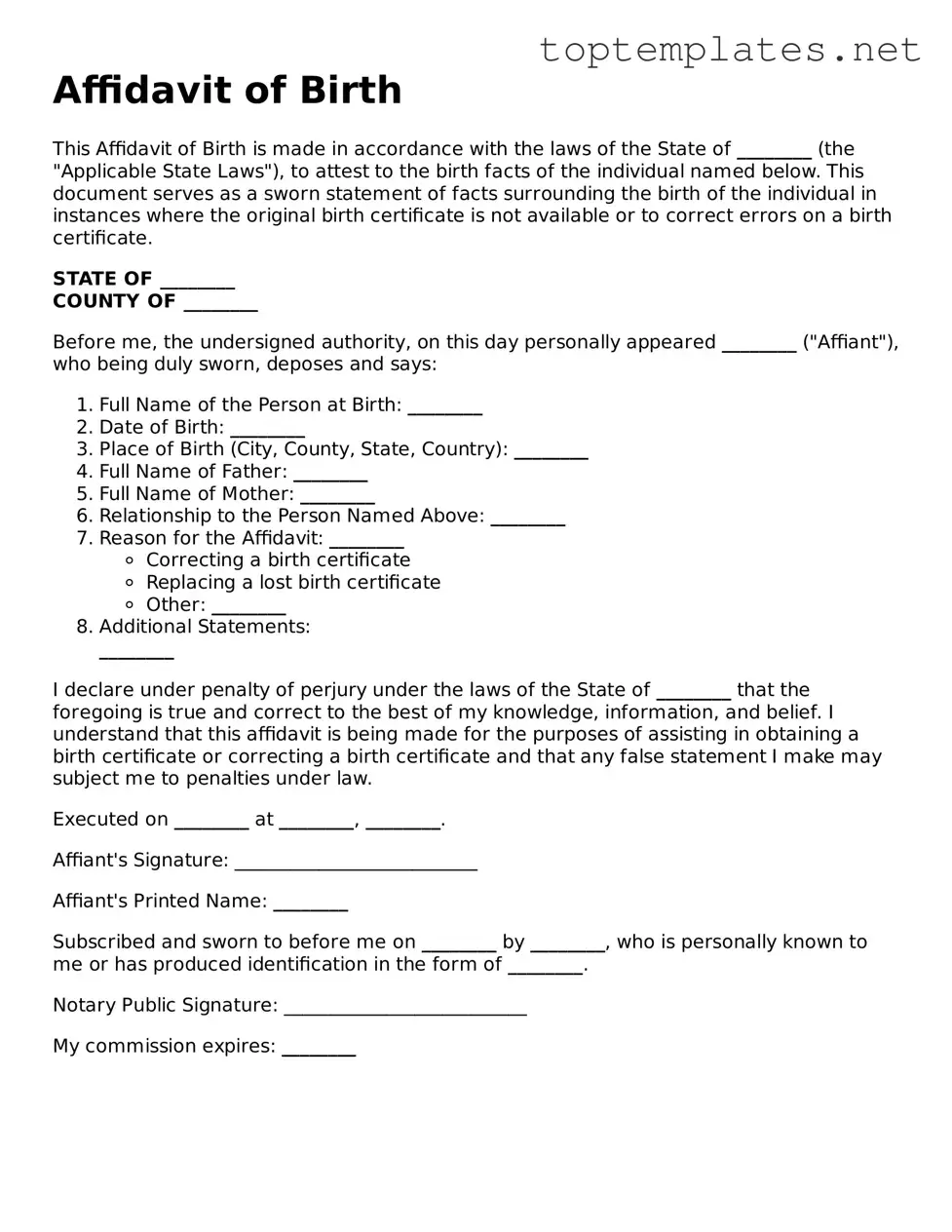What is an Affidavit of Birth?
An Affidavit of Birth is a legal document used to verify a person’s birth information when the original birth certificate is not available. It can serve as evidence of date of birth, place of birth, and parentage. Typically, a close relative or someone with personal knowledge of the birth completes the affidavit.
Who can complete an Affidavit of Birth?
Generally, a person who was present at the time of birth or who has firsthand knowledge of the birth can complete the affidavit. This often includes close family members, such as parents or grandparents, but can also include family friends or medical personnel who were present at the birth.
When is an Affidavit of Birth necessary?
This document may be necessary for obtaining a passport, enrolling in school, or applying for certain government services. It is especially useful in situations where the original birth certificate has been lost, destroyed, or was never issued.
What information is included in an Affidavit of Birth?
The affidavit typically includes the full name of the person whose birth is being certified, the date of birth, the place of birth, names of parents, and the relationship of the affiant to the person. It may also require details on the circumstances surrounding the birth and why the original birth certificate is unavailable.
Is an Affidavit of Birth legally binding?
Yes, the Affidavit of Birth is a legally binding document. The person completing the affidavit must provide truthful information and sign the document in the presence of a notary public. Providing false information can result in legal penalties.
How do I get an Affidavit of Birth notarized?
To get an Affidavit of Birth notarized, the affiant must sign the document in front of a notary public. The notary will confirm the identity of the person signing the affidavit, witness the signature, and then stamp or seal the document, officially notarizing it. Notary services can often be found at banks, law offices, or government buildings.
Can an Affidavit of Birth replace a birth certificate?
While an Affidavit of Birth provides important information about a person’s birth, it is generally not considered a replacement for an official birth certificate. However, it can be used as supplemental evidence of birth in situations where a birth certificate is not available.
What if the information in the Affidavit of Birth is incorrect?
If the information provided in the Affidavit of Birth is discovered to be incorrect, it is important to correct the document as soon as possible. This may involve completing a new affidavit with the correct information and getting it notarized again. Incorrect information can lead to issues with the legal processes for which the affidavit was used.
How long is an Affidavit of Birth valid?
An Affidavit of Birth does not typically have an expiration date and remains valid as long as the information it contains is accurate and the document is intact. However, the specific requirements regarding the validity of the affidavit can vary depending on the entity or agency requesting it.
